Clean Oven Naturally Fast: Is your oven looking less like a culinary haven and more like a burnt offering site? Don’t despair! I know the feeling. We’ve all been there, staring into the abyss of baked-on grease and wondering if a hazmat suit is required for cleaning. But before you reach for those harsh chemicals and spend hours scrubbing, let me let you in on a little secret: you can clean your oven naturally fast, and with ingredients you probably already have in your pantry!
For generations, resourceful homemakers have relied on the power of natural ingredients to keep their homes sparkling. Before the age of commercial cleaners, things like baking soda and vinegar were the go-to solutions for tackling tough messes. This isn’t just about nostalgia; it’s about harnessing the power of simple, effective, and eco-friendly methods.
Let’s face it, nobody enjoys cleaning the oven. It’s a chore we all dread. But a clean oven isn’t just about aesthetics; it’s about efficiency and safety. Burnt food residue can affect the taste of your dishes and even pose a fire hazard. Plus, who wants to cook in a dirty oven? This DIY guide will show you how to achieve a sparkling clean oven without the fumes, the expense, or the elbow grease. Get ready to say goodbye to oven grime and hello to delicious, perfectly cooked meals!
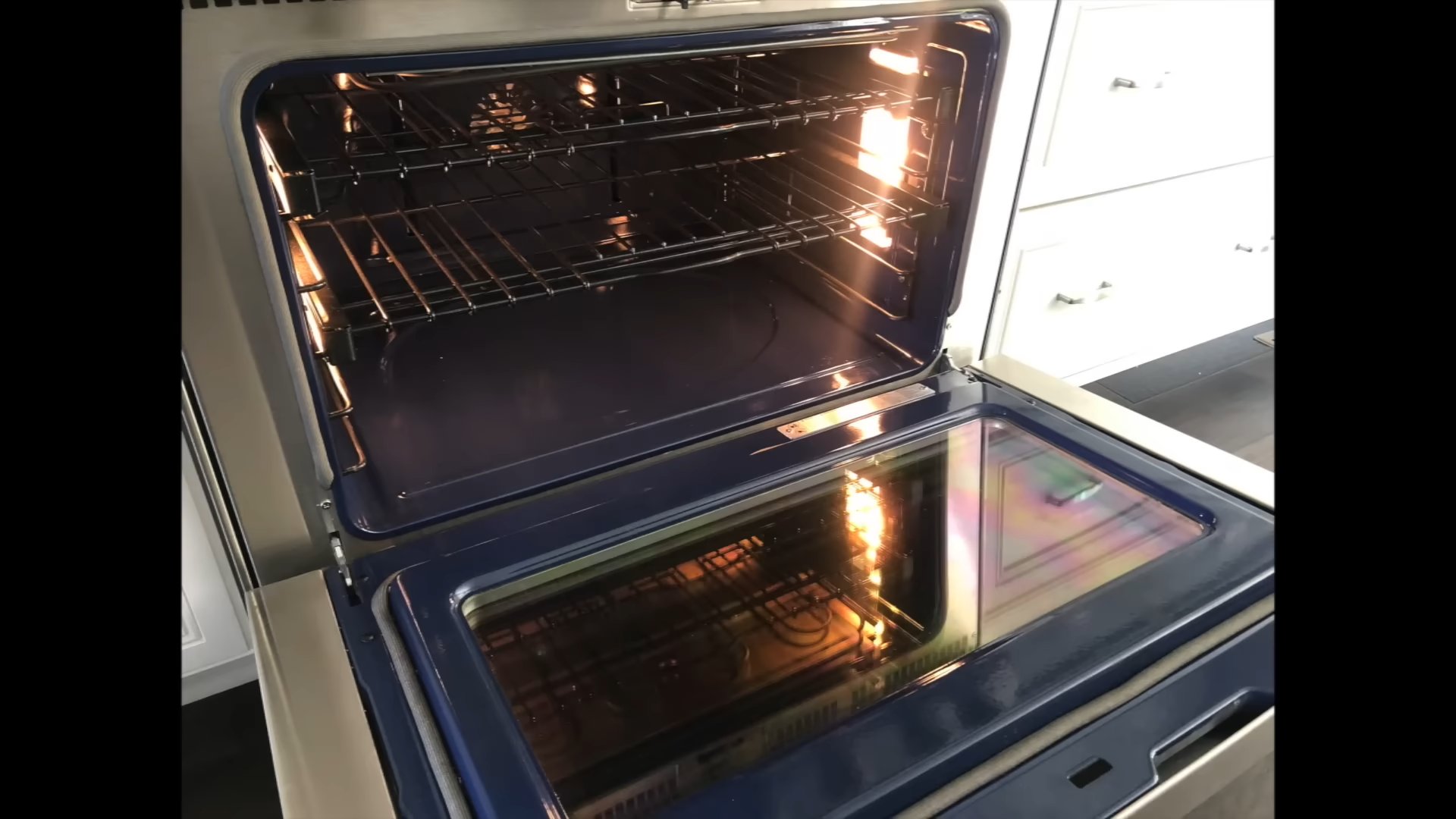
DIY Oven Cleaning: A Natural and Speedy Approach
Okay, let’s face it, cleaning the oven is probably on everyone’s list of least favorite chores. But a sparkling clean oven not only makes cooking more enjoyable, it also helps your oven function more efficiently! Forget those harsh chemical cleaners; I’m going to show you how to clean your oven naturally, quickly, and with ingredients you probably already have in your pantry.
What You’ll Need
Before we dive in, let’s gather our supplies. This is a pretty straightforward process, so the list is short and sweet:
* Baking soda
* White vinegar
* Water
* Spray bottle
* Spatula or scraper (plastic or silicone is best to avoid scratching)
* Microfiber cloths or sponges
* Rubber gloves (optional, but recommended)
* Small bowl
* Old towel or newspaper (to protect your floor)
Step-by-Step Oven Cleaning Guide
Alright, let’s get this oven sparkling! I’ve broken it down into easy-to-follow steps.
Phase 1: The Baking Soda Paste
This is where the magic begins! Baking soda is a fantastic natural cleaner and deodorizer.
1. Prepare the Oven: First, remove the oven racks. I usually soak mine in hot, soapy water in the sink while I’m working on the oven itself. This gives them a head start on getting clean. Also, remove any large chunks of food debris from the oven floor. A quick sweep with a brush or your hand (with a glove on, of course!) will do the trick. Lay down your old towel or newspaper to catch any drips or spills.
2. Mix the Baking Soda Paste: In your small bowl, mix together about ½ cup of baking soda with enough water to form a spreadable paste. You’re aiming for a consistency similar to frosting. Add the water gradually, mixing as you go, until you get the right texture.
3. Apply the Paste: Now, using your hands (gloves on!), spread the baking soda paste all over the inside of your oven. This includes the walls, the floor, the door (inside), and even the heating elements (if you can reach them safely). Avoid the heating elements if you’re not comfortable reaching them. Be generous with the paste, especially on areas with baked-on grime.
4. Let it Sit (and Work its Magic!): This is the most important part! Let the baking soda paste sit for at least 12 hours, or even better, overnight. The longer it sits, the more time it has to loosen the baked-on grease and grime. I usually do this before I go to bed so it can work its magic while I sleep.
Phase 2: The Vinegar Power Wash
Vinegar is our secret weapon for dissolving the baking soda and lifting away the loosened grime.
5. Prepare the Vinegar Solution: Pour some white vinegar into your spray bottle. You don’t need to dilute it; we’re using it full strength.
6. Spray the Vinegar: After the baking soda paste has sat overnight (or for at least 12 hours), spray the entire interior of the oven with the white vinegar. You’ll notice that the vinegar reacts with the baking soda, creating a fizzy, bubbly action. This is exactly what we want!
7. Wipe Away the Grime: Using your microfiber cloths or sponges, start wiping away the baking soda and vinegar mixture. You’ll be amazed at how easily the grime comes off! For stubborn spots, use your spatula or scraper to gently loosen the baked-on residue. Be careful not to scratch the oven surface.
8. Rinse and Repeat (If Necessary): You might need to rinse your cloths or sponges frequently as you wipe. If there are still some stubborn areas, repeat the spraying and wiping process. You can also make a fresh batch of baking soda paste and apply it to those areas for a little extra cleaning power.
Phase 3: The Final Touches
Almost there! Just a few more steps to a sparkling clean oven.
9. Wipe Down the Oven Door: Don’t forget the oven door! Wipe down both the inside and outside of the door with a clean, damp cloth. Pay special attention to any streaks or smudges.
10. Clean the Oven Racks: By now, your oven racks should have been soaking for a while. Scrub them with a sponge or brush to remove any remaining grime. Rinse them thoroughly with clean water and let them dry completely before putting them back in the oven.
11. Final Wipe Down: Give the entire interior of the oven one last wipe down with a clean, damp cloth to remove any remaining residue.
12. Dry the Oven: Use a clean, dry cloth to dry the inside of the oven. This will help prevent any water spots from forming.
13. Reassemble and Enjoy!: Once everything is dry, put the oven racks back in place. And that’s it! You now have a sparkling clean oven, naturally and quickly!
Tips and Tricks for a Super Clean Oven
Here are a few extra tips and tricks I’ve learned over the years to make oven cleaning even easier:
* Clean Regularly: The more often you clean your oven, the easier it will be to keep it clean. I try to do a quick wipe-down after each use to prevent spills from baking on.
* Self-Cleaning Ovens: While this method is great for a deep clean, you can also use the self-cleaning function on your oven (if it has one) for regular maintenance. However, be aware that the self-cleaning function can produce strong odors and use a lot of energy.
* Lemon Power: For a fresh scent and extra cleaning power, you can add a few drops of lemon essential oil to your vinegar solution. You can also place a bowl of water with lemon slices in the oven and bake it at 350°F for 30 minutes to loosen grime.
* Tackle Stubborn Stains: For really stubborn stains, try making a paste of baking soda and hydrogen peroxide. Apply it to the stain, let it sit for a few minutes, and then scrub it away.
* Protect Your Oven: To prevent future spills from baking on, consider using oven liners or baking sheets to catch drips and splatters.
* Ventilation is Key: Even though we’re using natural ingredients, it’s still a good idea to open a window or turn on your kitchen fan while you’re cleaning the oven to ensure proper ventilation.
* Don’t Forget the Glass: For a sparkling clean oven door glass, you can use a glass cleaner or a mixture of vinegar and water. Spray the glass, let it sit for a few minutes, and then wipe it clean with a microfiber cloth.
* Safety First: Always unplug your oven before cleaning it to prevent electric shock. And be careful when working around the heating elements.
* Soak the Racks Longer: If your oven racks are particularly dirty, you can soak them overnight in a solution of hot water and dish soap. This will help loosen the grime and make them easier to clean.
* Use a Toothbrush: An old toothbrush is a great tool for cleaning hard-to-reach areas, such as around the oven door hinges and the edges of the heating elements.
Why Choose Natural Cleaning?
I’m a big advocate for natural cleaning because it’s better for your health, your home, and the environment. Harsh chemical cleaners can contain harmful ingredients that can irritate your skin, eyes, and respiratory system. They can also pollute the air and water. By using natural ingredients like baking soda and vinegar, you can clean your oven effectively without exposing yourself or your family to harmful chemicals. Plus, it’s often more affordable!
So there you have it! A simple, natural, and effective way to clean your oven. I hope this guide helps you get your oven sparkling clean and ready for your next culinary adventure. Happy cleaning!
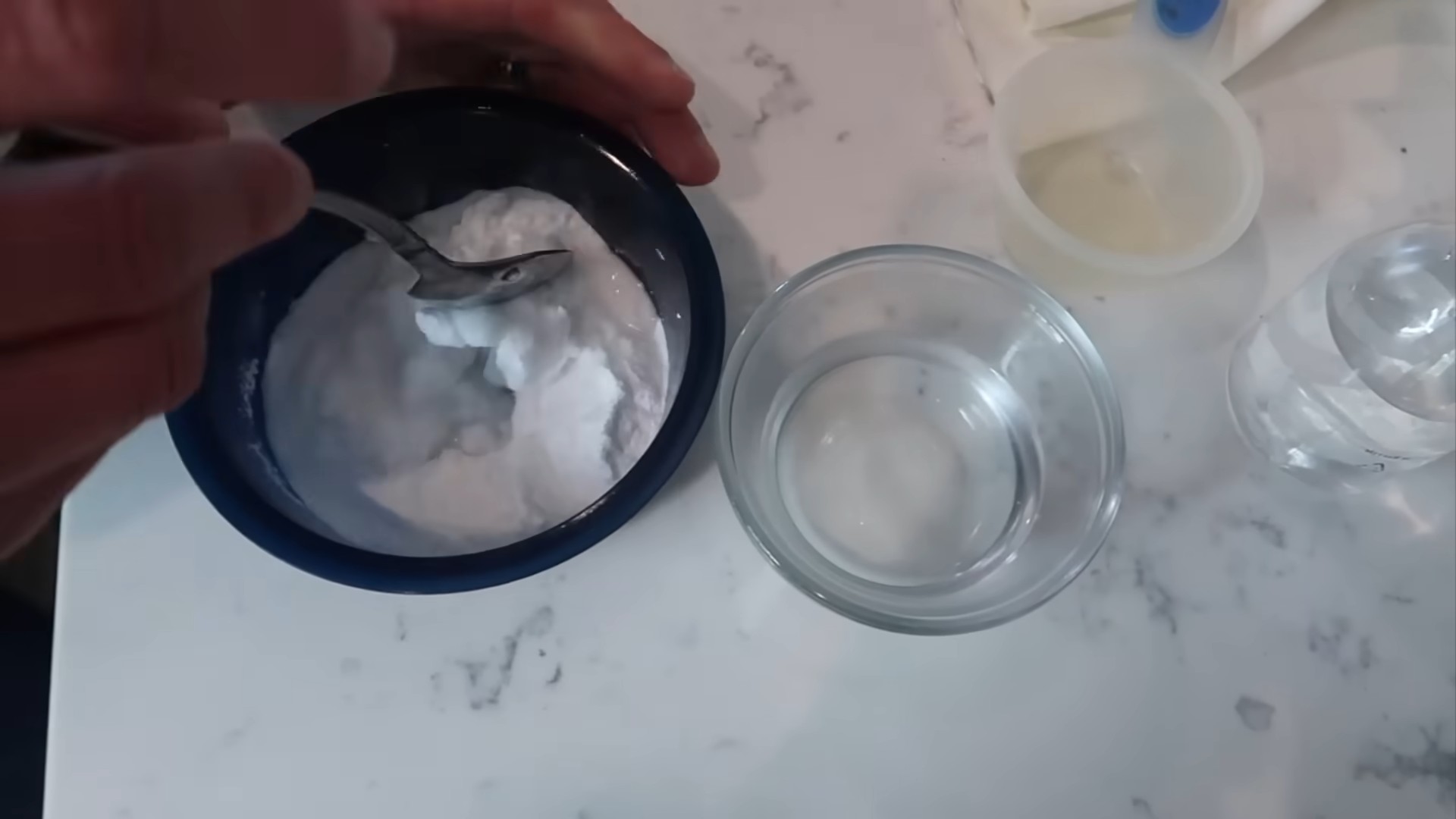
Conclusion
So, there you have it! A simple, effective, and entirely natural way to clean oven naturally fast without resorting to harsh chemicals or expensive cleaning products. This DIY method isn’t just about saving money; it’s about creating a healthier home environment for you and your family. Think about it: no more lingering chemical smells, no more worrying about residue contaminating your food, and no more burning sensations in your eyes and throat while you scrub.
This method is a game-changer because it leverages the power of readily available ingredients – baking soda and vinegar – to tackle even the most stubborn baked-on grime. The baking soda acts as a gentle abrasive, loosening the dirt, while the vinegar reacts with it to create a fizzing action that lifts away the mess. It’s a powerful combination that’s surprisingly effective.
But the beauty of this DIY trick lies in its adaptability. Feel free to experiment with variations to suit your specific needs. For instance, if you have particularly tough stains, you can add a few drops of lemon essential oil to the baking soda paste for extra degreasing power and a pleasant scent. Alternatively, you could try using a paste made with washing soda (sodium carbonate) instead of baking soda for an even stronger cleaning action, but be sure to wear gloves as washing soda can be irritating to the skin.
Another variation involves preheating your oven to a low temperature (around 200°F or 93°C) for about 15 minutes after applying the baking soda paste. The gentle heat can help to soften the grime and make it even easier to scrub away. Just be sure to turn off the oven and let it cool slightly before you start scrubbing.
We understand that tackling a dirty oven can seem like a daunting task, but trust us, this method makes it significantly easier and more manageable. The key is to be patient and allow the baking soda paste to sit for several hours, or even overnight, to work its magic. The longer it sits, the more effective it will be at loosening the grime.
This natural oven cleaning method is a must-try for anyone looking for a safer, more sustainable, and cost-effective way to keep their oven sparkling clean. It’s a simple yet powerful solution that delivers impressive results without compromising your health or the environment.
So, what are you waiting for? Give this DIY trick a try and experience the satisfaction of a clean oven without the harsh chemicals. We’re confident that you’ll be amazed by the results.
And most importantly, we want to hear about your experience! Share your before-and-after photos, tips, and variations in the comments below. Let’s create a community of natural oven cleaning enthusiasts and help each other discover the best ways to keep our ovens sparkling clean and our homes healthy. Your feedback is invaluable and will help us refine and improve this method for everyone. We are eager to learn from your successes and challenges! Let us know if you found a particularly effective technique or if you encountered any difficulties. Together, we can conquer even the dirtiest ovens!
FAQ
Why should I choose this natural method over commercial oven cleaners?
Commercial oven cleaners often contain harsh chemicals like lye, which can be corrosive and harmful to your health. These chemicals can irritate your skin, eyes, and respiratory system. They can also leave behind residue that can contaminate your food. This natural method, using baking soda and vinegar, is a safer and more eco-friendly alternative. It’s non-toxic, doesn’t produce harmful fumes, and is just as effective at removing grease and grime. Plus, it’s significantly cheaper!
How long does it take to clean the oven using this method?
The actual scrubbing time is relatively short, typically 15-30 minutes, depending on how dirty your oven is. However, the baking soda paste needs to sit for several hours, ideally overnight, to effectively loosen the grime. So, plan accordingly and apply the paste in the evening so it can work its magic while you sleep.
Can I use this method on a self-cleaning oven?
While this method is generally safe for most ovens, it’s always a good idea to consult your oven’s manual before trying any cleaning method, especially on a self-cleaning oven. Some self-cleaning ovens have special coatings that could be damaged by abrasive cleaners, even natural ones. If you’re unsure, test the baking soda paste on a small, inconspicuous area first.
What if the grime is really stubborn and doesn’t come off easily?
For particularly stubborn grime, you can try a few things. First, make sure you’ve applied a thick enough layer of baking soda paste and that it’s had enough time to sit. You can also try adding a few drops of dish soap to the paste for extra degreasing power. Another option is to use a more abrasive scrubbing tool, such as a scouring pad or a steel wool pad (but be careful not to scratch the oven surface). As mentioned in the conclusion, washing soda can be used instead of baking soda for a stronger cleaning action.
Is it safe to use vinegar on my oven’s heating element?
It’s generally safe to use vinegar on the heating element, but avoid pouring it directly onto the element. Instead, spray it lightly onto the baking soda paste that’s already on the element. Be sure to wipe away any excess vinegar before turning on the oven.
How often should I clean my oven using this method?
The frequency of cleaning depends on how often you use your oven and how messy it gets. As a general rule, it’s a good idea to clean your oven every 3-6 months. However, if you notice spills or splatters, it’s best to clean them up immediately to prevent them from baking on and becoming harder to remove later.
What if I don’t have baking soda or vinegar? Can I use something else?
While baking soda and vinegar are the key ingredients in this method, you can try substituting them with other natural cleaning agents. For example, you can use lemon juice instead of vinegar. Lemon juice is a natural degreaser and has antibacterial properties. You can also try using cream of tartar mixed with water to form a paste. Cream of tartar is a mild abrasive that can help to loosen grime.
How do I clean the oven door glass using this method?
The baking soda and vinegar paste works well on oven door glass too! Apply the paste to the glass, let it sit for a few minutes, and then scrub with a non-abrasive sponge or cloth. For stubborn stains, you can use a razor blade scraper, but be very careful not to scratch the glass.
Can I use this method to clean my microwave?
Yes, this method can be adapted to clean your microwave. Simply mix baking soda and water to form a paste, apply it to the inside of the microwave, and let it sit for a few minutes. Then, wipe clean with a damp cloth. For extra cleaning power, you can microwave a bowl of water with a few tablespoons of vinegar for a few minutes to loosen the grime before wiping.
What are some tips for preventing my oven from getting so dirty in the first place?
Prevention is always better than cure! To prevent your oven from getting too dirty, try these tips:
* Use oven liners or baking sheets to catch spills and splatters.
* Clean up spills immediately.
* Avoid overfilling dishes that might bubble over.
* Consider using a splatter guard when cooking messy foods.
* Regularly wipe down the inside of your oven with a damp cloth.
By following these tips, you can significantly reduce the amount of grime that accumulates in your oven and make cleaning much easier. And remember, when it’s time to clean oven naturally fast, this DIY method is your go-to solution!

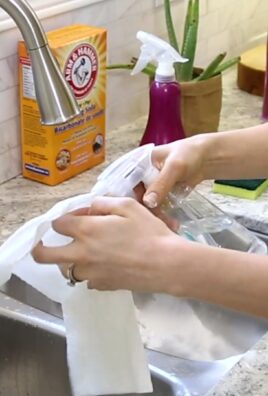
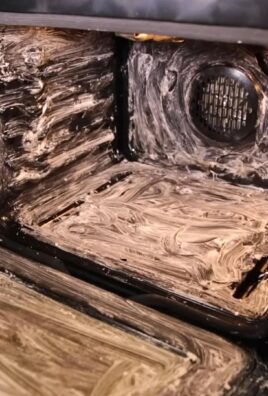
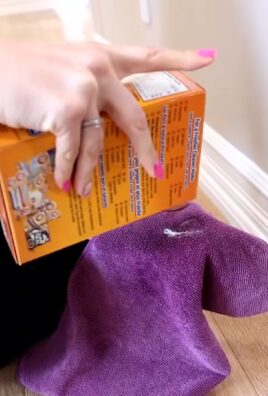
Leave a Comment